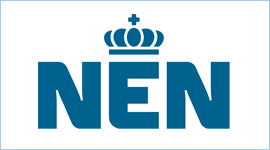Do you also catch yourself mindlessly scrolling through Instagram whenever you have got some time to spare? Believe me, you are not alone. But have you ever wondered how all these images of other people’s bodies may affect how you view your own body? No matter whether these pictures are your friend’s holiday picture, influencers’ gym selfie, or a celebrity’s beach photoshoot. You may think by yourself: “I wish I looked like her”.
Nowadays, the usage of social media is gradually growing and has already infiltrated into our daily lives. Instagram creates the illusion of perfection which is perceived by many as the beauty standards. In contrary to these beauty standards, our normal non-perfect lives seem somehow abnormal. As a result, some people may resort to drastic measures, or even eating disorders as their dissatisfaction with their body grows to try to achieve these unattainable goals as “beauty standards” (Dakanalis et al. 2014).
As we are scrolling through Instagram or posting pictures of ourselves, negative thoughts about our own body may arise (Holland & Tiggermann, 2016). A harsh comment by someone may result in dissatisfaction with our own body as many of us tend to interpret our social standing through comments or social comparison (Toma et al. 2008). A nice example is a video I encountered a few years ago by Cassey Ho, a social media fitness entrepreneur. Please watch the video below.
This video reflected how the comments by others on social media may affect how we feel about our own body. It made me start wondering how much of what we see are real on Instagram. Nowadays, there are numerous apps for altering your face and body as well as beauty filters to cover your imperfections (Fallon, 2014). Many of the pictures we see online are altered to enhance their features before it goes online. Even if I do not want to admit it, I will often find myself comparing to these influencers as well. I believe many followers of these Insta-celebrities do as well and what these followers think, actually becomes the new beauty standard.
This is just how trends work; they are going in and out like a fast fashion. Back in the day, flat chest and slim waist were in and now curvy body, thick lips and big booty are in. What is next? What do you think about the current beauty standard that is defined by altered pictures as the result of the current technology? Are you able to catch up with the current trend or will you rather alter yourself just to fit in? Let me know in the comments below!
Sources:
Dakanalis, A., Clerici, M., Caslini, M., Favagrossa, L., Prunas, A., Volpato, C., & Zanetti, M. A. (2014). Internalization of sociocultural standards of beauty and disordered eating behaviours: the role of body surveillance, shame and social anxiety. Journal of Psychopathology, 20, 33-37.
Ho, C. (2015) The “Perfect” Body [Video File]. Retrieved from https://www.youtube.com/watch?v=PsL7W-GHhJA
Holland, G., & Tiggemann, M. (2016). A systematic review of the impact of the use of social networking sites on body image and disordered eating outcomes. Body image, 17, 100-110.
Fallon, K. (2014). Streams of the self: The Instagram feed as narrative autobiography. In Proceedings of the interactive narratives, new media & social engagement international conference (Vol. 101, pp. 54-60).
Toma, C. L., Hancock, J. T., & Ellison, N. B. (2008). Separating fact from fiction: An examination of deceptive self-presentation in online dating profiles. Personality and Social Psychology Bulletin, 34(8), 1023-1036.


